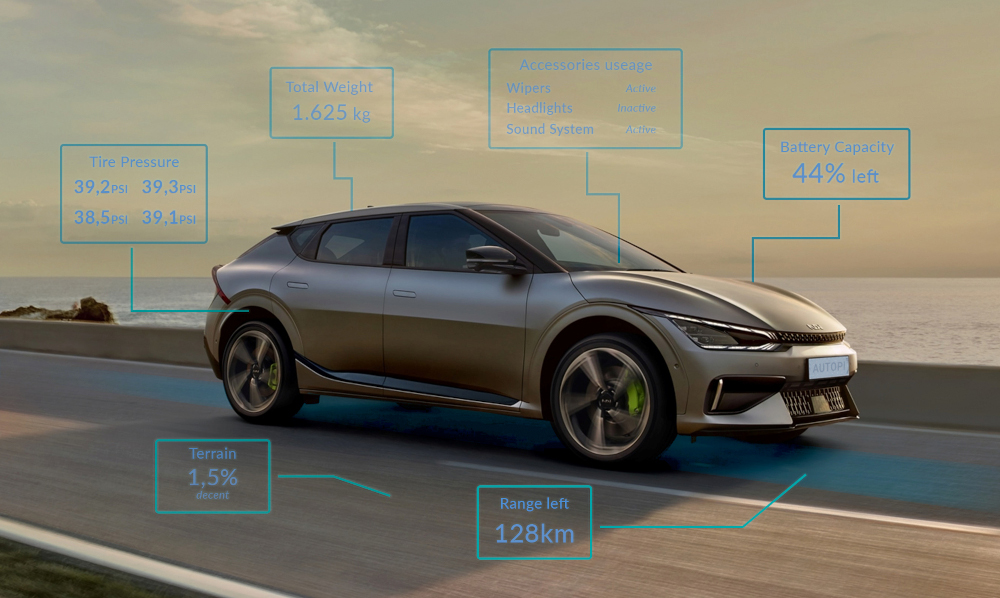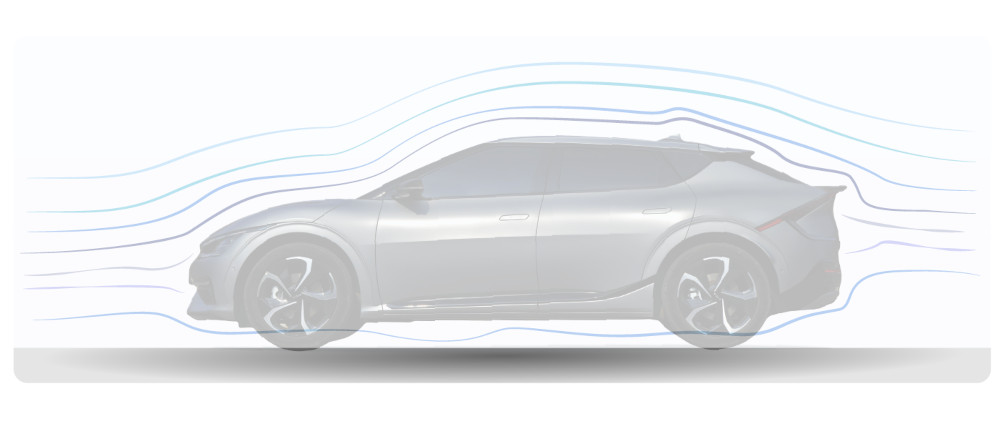In the world of electric vehicles, understanding what influences their driving range is essential.
This blog dives into key factors like battery technology, regular maintenance, and how different road conditions can affect your EV's performance.
Whether you're new to electric cars or a long-time user, these insights will enhance your driving experience and help you get the most out of your EV.
What is EV Range?
Electric Vehicle (EV) range refers to the total distance an electric vehicle can travel on a single charge.
Unlike traditional gasoline-powered cars, which measure their driving capacity in miles per gallon, the range of an EV is typically expressed in miles or kilometers per full battery charge.
This range varies significantly among different EV models and is influenced by the battery's capacity, which is measured in kilowatt-hours (kWh).

What Are The Factors That Influence Total Driving Range?
Several factors uniquely influence the total driving range of an electric vehicle (EV), beyond battery capacity and driving habits:
-
Aerodynamics: Sleeker vehicle designs reduce air resistance, which can increase range.
-
Tire Type and Condition: Low rolling resistance tires improve range, while worn tires decrease it.
-
Vehicle Weight: Lighter EVs consume less energy, enhancing the range.
-
Speed: Higher speeds increase energy consumption, reducing the range.
-
Battery Age and Health: Battery capacity degrades over time, reducing range.
-
Charging Habits: Excessive fast charging can impact long-term battery health and range.
-
Weather Conditions: Extreme temperatures, both hot and cold, can significantly impact battery performance and range.
-
In cold weather, batteries are less efficient, and additional energy is used for
-
heating the cabin. In hot weather, battery cooling systems can consume extra energy.
-
These factors, when managed effectively, can help EV owners maximize their vehicle's range and overall performance.

How Can You Calculate Your EV's Range?
Calculating your electric vehicle's (EV) driving distance can seem complex, but it's quite straightforward once you understand the basics.
Here are ten examples to illustrate how you can estimate the driving range of your EV:
-
Battery Capacity: Divide the battery capacity (in kWh) by your car's energy use per mile to estimate range.
-
Manufacturer’s Estimate: Start with the range provided by your EV manufacturer, keeping in mind real-world conditions may vary.
-
Average Mileage: Monitor your average distance per charge over time for a practical range estimate.
-
In-Car Range Calculators: Use your EV's built-in tool that predicts range based on current battery level and driving history.
-
Mobile Apps: Utilize smartphone apps designed for EVs to calculate potential range.
-
Online Tools: Input your EV model and driving conditions into online calculators for an estimated range.
-
Regenerative Braking: Consider the extra range gained from regenerative braking, which recharges the battery while driving.
-
Weather Adjustment: Adjust your range estimates for extreme temperatures, as they can affect battery efficiency.
-
Driving Conditions: Factor in terrain and driving habits, as uphill driving and speed variations can reduce range.
-
Accessory Consumption: Remember that using in-car accessories like heating or AC can lower the available driving range.
EV Range Calculation Example
Let's use a real-world example using a hypothetical electric vehicle:
Suppose you own an EV with a battery capacity of 75 kilowatt-hours (kWh) and the manufacturer states an efficiency of 3 kWh per mile. Here's how you would calculate the estimated driving range:
-
Calculate Efficiency: The EV uses 3 kWh to travel one mile.
-
Determine Total Range: Divide the total battery capacity by the car's energy consumption. In this case, it's 75 kWh ÷ 3 kWh/mile = 25 miles.
-
Real-world Adjustment: If you've noticed that your daily driving conditions (like city traffic, hilly areas, or highway speeds) reduce efficiency, you might adjust this estimate down by 10-20%. For instance, a 15% reduction would give a more realistic range of 25 miles × 0.85 = 21.25 miles.
-
Factor in Accessories: If you frequently use air conditioning or heating, this could further reduce the range. Assuming a 5% reduction for accessory use, the final estimate would be 21.25 miles × 0.95 ≈ 20 miles.
So, in this example, your EV, under typical conditions and with regular accessory use, would have an estimated range of around 20 miles per charge. Keep in mind, this is a simplified calculation and actual range can vary based on numerous factors including battery age, maintenance, and driving style.
What EV Has The Longest Range?
Electric vehicles (EVs) have come a long way in terms of technology and performance.
A key factor in their appeal is the driving range they offer on a single charge. This range is continuously improving, reflecting advancements in battery technology and efficiency.
The following table showcases a variety of EVs, highlighting their ranges from the shortest to the longest, as of 2023. This comparison provides insight into the diverse options available in the market.
|
EV Model
|
Manufacturer
|
Range (miles)
|
Year
|
|---|---|---|---|
| Mini Electric Hardtop | Mini | 110 | 2023 |
| Mazda MX-30 | Mazda | 124 | 2023 |
| Nissan Leaf | Nissan | 150 | 2023 |
| Hyundai Kona Electric | Hyundai | 258 | 2023 |
| Tesla Model 3 Standard | Tesla | 272 | 2023 |
| Chevrolet Bolt EV | Chevrolet | 259 | 2023 |
| Ford Mustang Mach-E | Ford | 305 | 2023 |
| Tesla Model S Long Range | Tesla | 405 | 2023 |
| Lucid Air Dream Edition | Lucid Motors | 520 | 2023 |
Note: The ranges mentioned are based on EPA estimates and can vary based on driving conditions, style, and other factors. This table is a representative list and does not include all available EV models as of 2023.
Maximizing EV Range with Telematics
EV telematics systems are crucial in optimizing the range of EVs.
These systems monitor and analyze various aspects of the vehicle's performance and environmental conditions. They provide real-time data on battery status, energy consumption, and driving patterns.
Additionally, telematics can help in predictive maintenance, alerting drivers to potential issues before they become serious problems, thus preserving the vehicle's overall health and efficiency.





